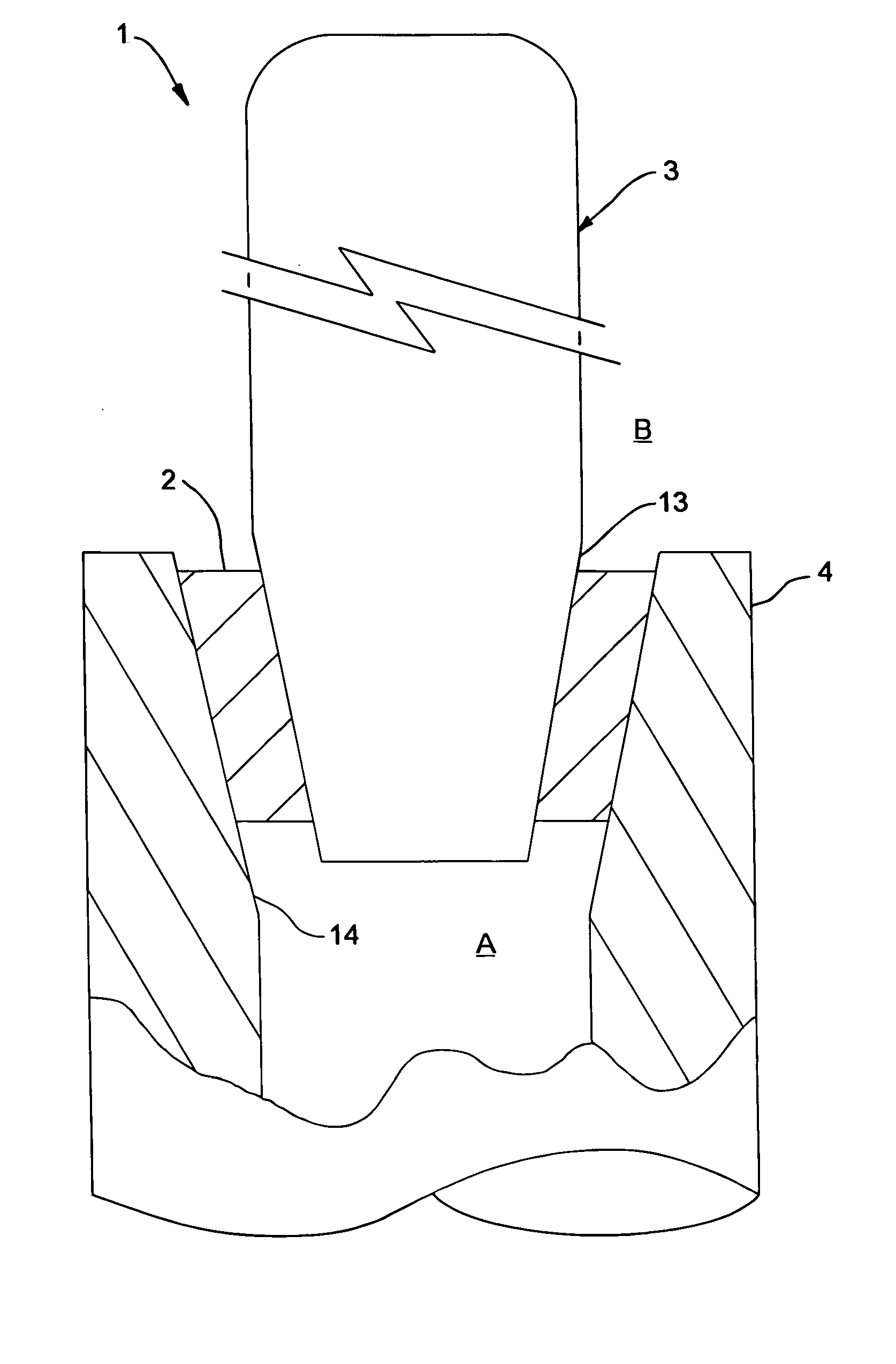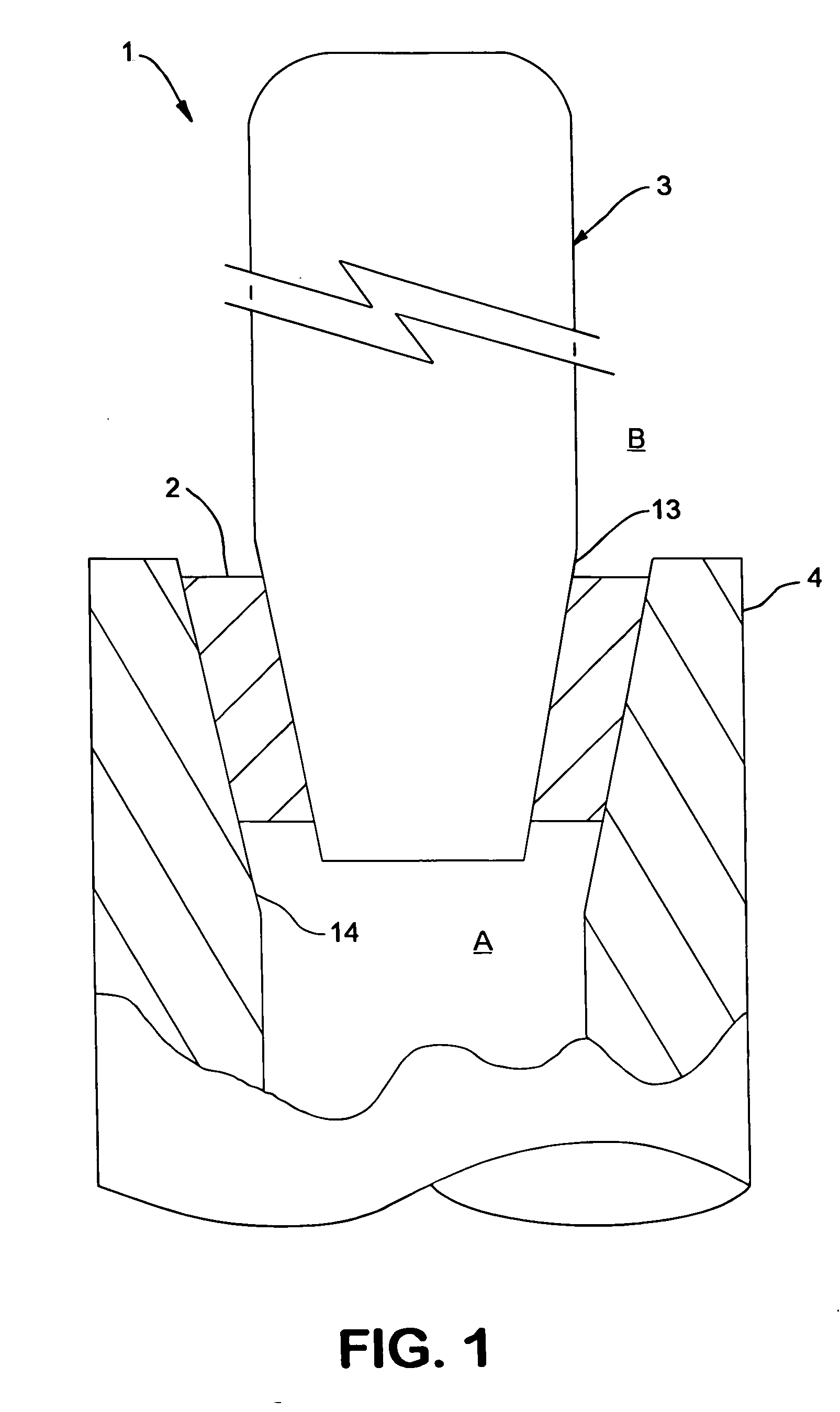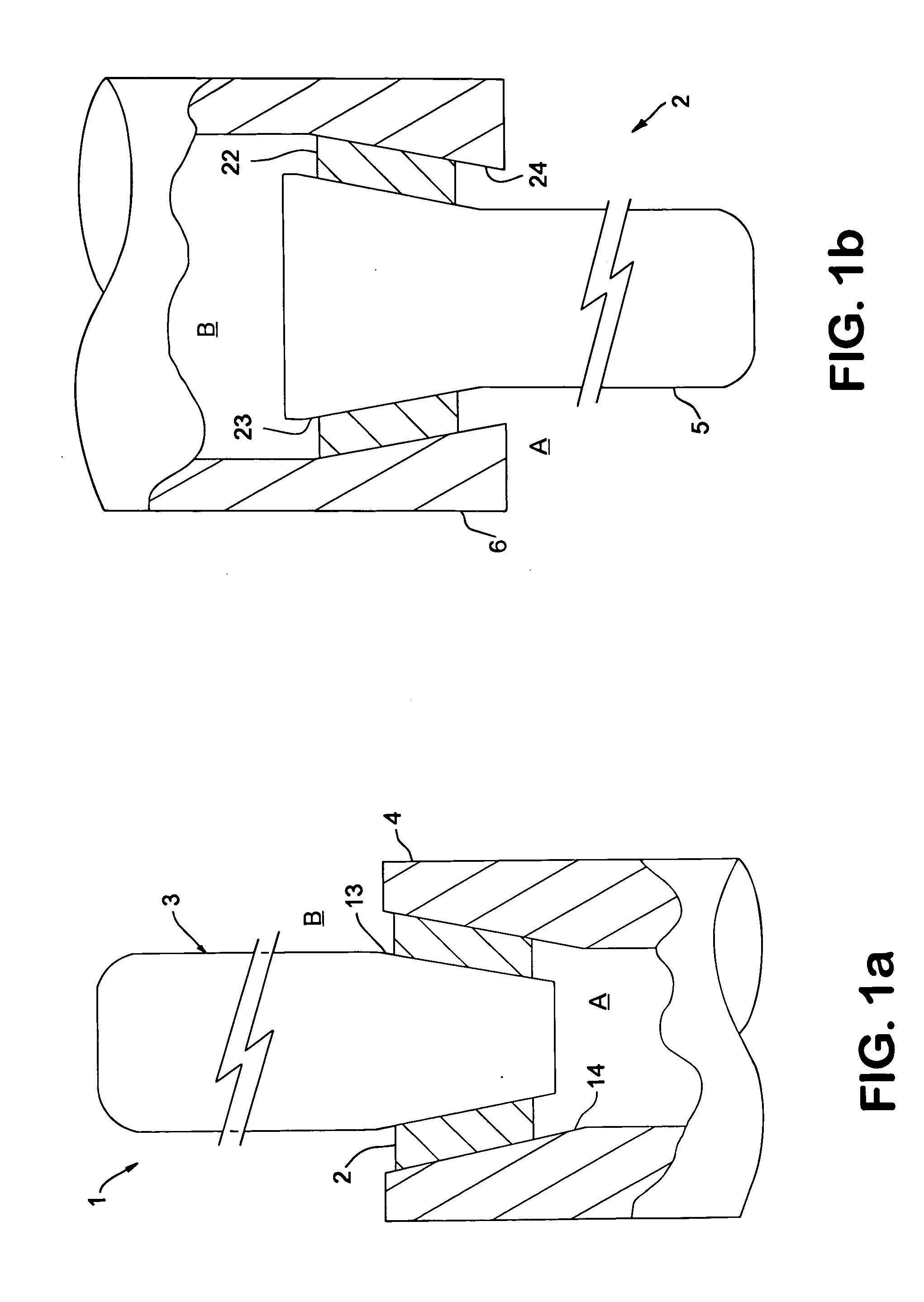High temperature joints for dissimilar materials
a technology of dissimilar materials and joints, applied in the direction of pipe joints, pipe connection arrangements, mechanical equipment, etc., can solve the problems of high coefficient of thermal expansion, limited strength at high operational temperatures of membranes, and excessive so as to improve the resistance to fluid leakage through joints and high strength
- Summary
- Abstract
- Description
- Claims
- Application Information
AI Technical Summary
Benefits of technology
Problems solved by technology
Method used
Image
Examples
example 1
[0091] This example demonstrates preparation of a joint resistant to fluid leakage according to one aspect of the invention. A gas-tight ceramic comprising an oxygen transport material was fabricated in the form of a tube closed at one end (COE) and having a nominal outer diameter (OD) of 3 / 8 inch using an iso-static press with a pre-formed bag and mandrel. The ceramic tube had a tapered outer surface near its open end with a 3 degree angle of taper as measured from the axis of the tube. Except where otherwise noted, the tapered surface was polished with 350 grit grinding media in a hardened metal head resembling a pencil sharpener. This polishing is only optional, as an example below will illustrate. A girdle of cast gold was disposed between the tapered ceramic surface and a high strength metallic material (alloy) comprising HAYNES 230.
example 2
[0092] In this example, the joint described in Example 1 was tested over many thermal cycles at pressure differential across the membrane of from about 60 to about 180 pounds per square inch differential (psid).
[0093] The entire apparatus was placed in a pipe of HAYNES 230 alloy (nominal 1½″ diameter). A high pressure nitrogen purge rate was 4 L / min. on the fuel side of the membrane, and a low pressure nitrogen purge rate was 2 L / min. on the air side of the membrane. The pipe containing the apparatus was inserted into a furnace that has heated at a rate of 1.2° C. per minute to 975° C., and held at 975° C. during operation.
[0094] As shown in FIG. 2, the temperature was increased to 975° C. and then cooled between 20° C. and 200° C. The pressure in the reactor was maintained above 60 psid and as high as 180 psid. The pressure spikes were from increasing the pressure to operate under syngas process conditions. Therefore, each time the process gases of methane and steam were brought ...
example 3
[0095] In this example, the joint and COE oxygen transport membrane described in Example 1 were demonstrated to under go syngas process cycles converting methane and steam at a ratio of 1 to 2 into syngas at near equilibrium conditions at about 975° C. to about 1000° C. The air side of the membrane was at near ambient pressure whereas the syngas side of the membrane was as high as 180 psid. As shown in FIG. 3, an oxygen Flux of 8 sccm / cm2 was achieved. The leak tight seal allows the oxygen transport membrane to act as an oxygen compressor hence the membrane is 100 percent selective to oxygen transport. Any leakage through the joint could easily have been detected by a temperature rise as recorded with thermal couples placed on the air side of the membrane. The high-pressure methane fuel would burn with ambient pressure air. These temperatures can be very high which melt the seal, membrane, and metal holder. Typically carbon dioxide and moisture sensors were placed in the spent air t...
PUM
| Property | Measurement | Unit |
|---|---|---|
| temperatures | aaaaa | aaaaa |
| pressures | aaaaa | aaaaa |
| temperatures | aaaaa | aaaaa |
Abstract
Description
Claims
Application Information
 Login to View More
Login to View More - R&D
- Intellectual Property
- Life Sciences
- Materials
- Tech Scout
- Unparalleled Data Quality
- Higher Quality Content
- 60% Fewer Hallucinations
Browse by: Latest US Patents, China's latest patents, Technical Efficacy Thesaurus, Application Domain, Technology Topic, Popular Technical Reports.
© 2025 PatSnap. All rights reserved.Legal|Privacy policy|Modern Slavery Act Transparency Statement|Sitemap|About US| Contact US: help@patsnap.com



